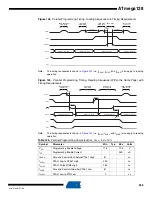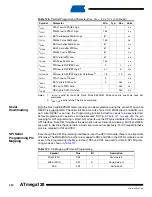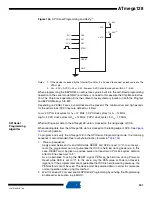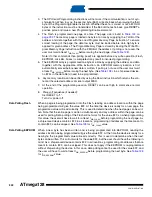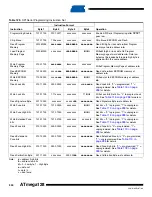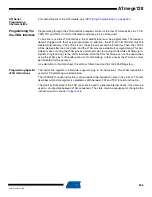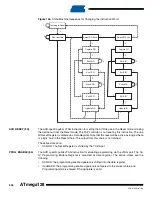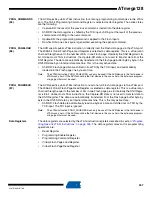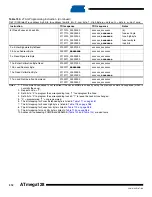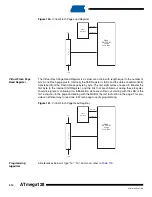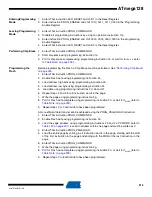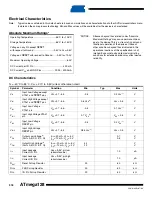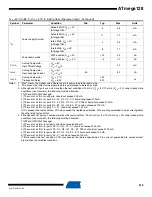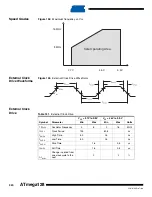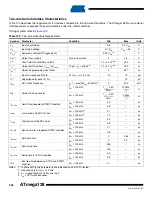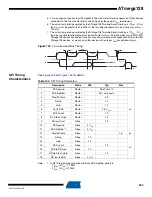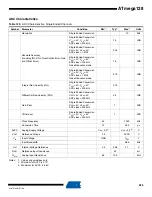
312
2467S–AVR–07/09
ATmega128
Notes:
1. This command sequence is not required if the seven MSB are correctly set by the previous command sequence (which is
normally the case).
2. Repeat until o = “1”.
3. Set bits to “0” to program the corresponding fuse, “1” to unprogram the Fuse.
4. Set bits to “0” to program the corresponding lock bit, “1” to leave the Lock bit unchanged.
5. “0” = programmed, “1” = unprogrammed.
6. The bit mapping for Fuses Extended byte is listed in
7. The bit mapping for Fuses High byte is listed in
8. The bit mapping for Fuses Low byte is listed in
9. The bit mapping for Lock bits byte is listed in
10. Address bits exceeding PCMSB and EEAMSB (
) are don’t care
8f. Read Fuses and Lock bits
0111010_00000000
0111110_00000000
0110010_00000000
0110110_00000000
0110111_00000000
xxxxxxx_xxxxxxxx
xxxxxxx_
oooooooo
xxxxxxx_
oooooooo
xxxxxxx_
oooooooo
xxxxxxx_
oooooooo
(5)
fuse ext. byte
fuse high byte
fuse low byte
lock bits
9a. Enter Signature Byte Read
0100011_00001000
xxxxxxx_xxxxxxxx
9b. Load Address Byte
0000011_
bbbbbbbb
xxxxxxx_xxxxxxxx
9c. Read Signature Byte
0110010_00000000
0110011_00000000
xxxxxxx_xxxxxxxx
xxxxxxx_
oooooooo
10a. Enter Calibration Byte Read
0100011_00001000
xxxxxxx_xxxxxxxx
10b. Load Address Byte
0000011_
bbbbbbbb
xxxxxxx_xxxxxxxx
10c. Read Calibration Byte
0110110_00000000
0110111_00000000
xxxxxxx_xxxxxxxx
xxxxxxx_
oooooooo
11a. Load No Operation Command
0100011_00000000
0110011_00000000
xxxxxxx_xxxxxxxx
xxxxxxx_xxxxxxxx
Table 130.
JTAG Programming Instruction (Continued)
Set (Continued)
a
= address high bits,
b
= address low bits,
H
= 0 - Low byte, 1 - High Byte,
o
= data out,
i
= data in, x = don’t care
Instruction
TDI sequence
TDO sequence
Notes


